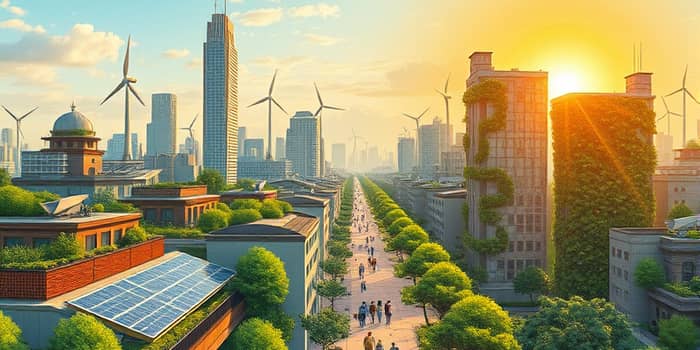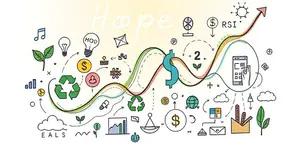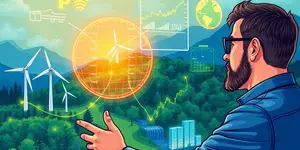Across the globe, a profound shift is underway as investors redirect capital toward properties that champion environmental stewardship and social responsibility. No longer viewed as niche, eco-friendly real estate now stands at the forefront of global fund flows, catalyzed by rising climate concerns, tightened legislation, and tangible economic benefits.
In this article, we explore the multifaceted drivers behind this movement, from regulatory mandates to consumer demand, and offer practical guidance for those seeking to participate in or develop sustainable real estate projects. Prepare to be inspired and empowered by the promise of a greener, more resilient built environment.
Regulatory Momentum and Global Standards
Governments worldwide are enacting measures that elevate sustainability from optional to obligatory. In the European Union, the Sustainable Finance Disclosure Regulation compels investment managers to report on ESG metrics, while the Energy Performance of Buildings Directive enforces net-zero energy standards for new constructions.
Similar initiatives in Asia and North America tighten building codes, incentivize renewable systems, and impose mandatory ESG disclosure requirements. This wave of regulation not only accelerates compliance but also charts a clear roadmap for investors and developers committed to long-term viability.
Investor Priorities and ESG Integration
Institutional investors and sovereign wealth funds are increasingly guided by sustainability criteria alongside financial metrics. According to recent surveys, over 60% of property investors factor ESG ratings into their decisions, seeking stable demand and reduced long-term risk.
For funds, aligning with Article 8 or Article 9 classifications under SFDR signals a dedication to measurable impact. These designations help asset managers differentiate portfolios and appeal to a growing cohort of climate-conscious stakeholders.
- Higher expected returns through efficiency gains
- Lower vacancy rates in certified buildings
- Enhanced reputation among clients and regulators
- Access to green financing and tax incentives
Value Creation Through Sustainability
Economic analyses consistently show that green buildings outperform their conventional counterparts. They command higher rental yields and property values, driven by tenant preferences and operational cost savings.
Net-zero homes and net-positive commercial spaces can slash energy bills by 60–100%, translating into significant bottom-line impact over the asset’s lifecycle. These savings, combined with futureproof against evolving regulations, make a compelling case for sustainable upgrades and new developments.
Technological Innovations Driving Change
Breakthroughs in renewable energy, battery storage, and building management systems are making sustainable developments more accessible and scalable than ever. Photovoltaic installations now pair with advanced inverters and AI-driven optimization to maximize output even in cloudy climates.
Meanwhile, the rise of on-site renewable energy systems and the use of recycled or locally sourced materials reduce embodied carbon and foster biophilic designs and green urban planning. These innovations not only drive cost efficiencies but also enhance occupant well-being.
Consumer-Driven Market Trends
Homebuyers and tenants are increasingly willing to pay a premium for properties that align with their values. Studies report that more than 70% of purchasers now prioritize energy efficiency and healthy indoor environments.
Developments that integrate green spaces, public transit access, and community amenities create desirable, walkable neighborhoods. They appeal to millennials and retirees alike, forming vibrant ecosystems that support social cohesion and lower carbon footprints.
Practical Steps for Investors and Developers
Turning ambition into action requires a strategic approach. Whether you’re an institutional fund or a boutique developer, these steps will help you navigate the sustainable real estate landscape:
- Conduct an ESG audit to benchmark current performance and identify opportunities.
- Engage with certification bodies like LEED or BREEAM early in the design phase.
- Incorporate smart building technologies for real-time energy monitoring.
- Secure green loans or sustainability-linked financing to offset upfront costs.
- Partner with local communities to integrate public spaces and transit links.
By embedding sustainability at every stage—from due diligence to operations—you can unlock reduced utility expenditures, attract premium tenants, and ensure resilience in a volatile regulatory environment.
Looking Ahead: The Future of Sustainable Real Estate
Projections indicate that by 2050, the majority of new developments will adhere to zero-carbon or net-positive criteria. As the climate crisis intensifies, the real estate sector’s role in mitigating environmental harm becomes ever more critical.
Ultimately, eco-friendly real estate represents not just a financial opportunity but a legacy. By investing in and constructing properties that respect natural systems, we can create thriving cities that endure for generations, nurturing both our planet and our communities.
References
- https://myfw.com/articles/real-estate-investment-trends-to-know-in-2025/
- https://primior.com/the-future-of-real-estate-investment-trends-where-sustainability-meets-digital-assets-2025/
- https://penteris.com/the-evolving-role-of-esg-in-real-estate-trends-for-2025/
- https://verdani.com/sustainability-industry-insights/verdanis-2025-sustainability-trends-protecting-driving-and-creating-value-in-commercial-real-estate
- https://www.maidencap.com/insights/green-real-estate-trends-in-2025
- https://impakter.com/sustainable-real-estate-hottest-trends-and-opportunities/
- https://www.morningstar.com/business/insights/blog/esg/sfdr-article-8-funds
- https://theleslieclarketeam.com/blog/real-estate-trends-for-2025










